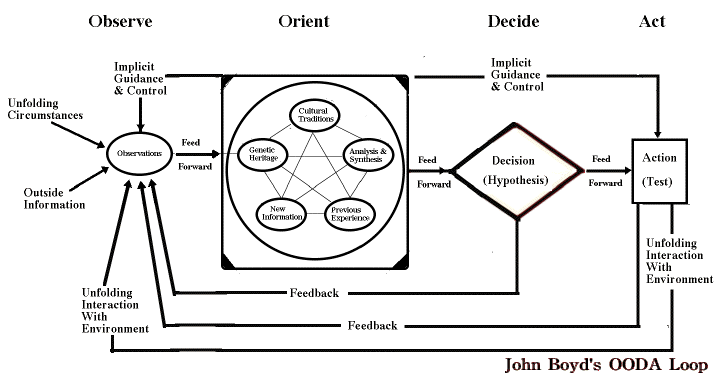 |
| (Source) |
In my prior post, I concentrated on the observation stage. That is, that the officers did not actually make a careful observation. However, the more I thought about the shootings, it became apparent that it was more than the simply failure to observe--it was also a lack of having a repertoire of other responses. A situation of "if your only tool is a hammer, every problem looks like a nail." Essentially, the officers jumped to a conclusion of using deadly force. Panic? Lack of training? Justifiable? I don't know for the specific cases.
Greg Ellifritz touches on this issue in a recent article on timing of a response to a threat. He writes about trying to get his students to accept using a firearm in self-defense. Once the hurdle of using deadly force on an attacker is overcome, he noted another problem manifest itself:
The students train with their firearms so much and think about their responses to attack scenarios so often that they are unable to recognize when it might be a better option to keep their gun holstered in the face of a criminal attack. They go to their guns as a default response to any lethal force threat. In general, that’s a great plan; but there are times that call for a more modulated response. Immediate violent resistance usually works to repel any criminal attack. There are scenarios, however, where immediate violent resistance is more likely to get you killed.As he notes, one of those times is if the perp has a pistol pointed at you ready to fire--"You can’t outdraw a trigger press!"
At Breach-Bang-Clear, in an article entitled "The Power of Myth, Misinformation and Ego," makes a similar comment about another defensive technique:
What about teaching students to throw their arms up to protect their face/chest before drawing their weapon as an automatic response? Makes sense for protecting against a thrown blow…doesn’t make sense for any other situation, yet if it’s sold under some scientific premise as a this is what happens in real life ....There is no one, universal response or technique that will work for every situation. Knowing and practicing various responses or techniques (training + practice + experience) will give you options to correctly decide how to react.
No comments:
Post a Comment